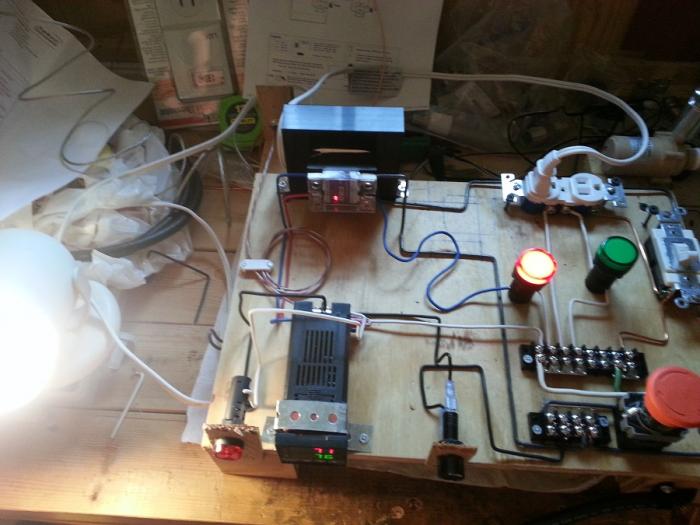- Joined
- Jul 21, 2013
- Messages
- 1,317
- Reaction score
- 305
Hopefully there haven't been too many 'what's wrong with this' threads, because I need to ask what is wrong. 
I have built out my first electric control panel and I managed to get past the first power on test without losing any magic smoke. The problem I have now is that while the system indicates that the SSR is switching and that there should be power to the element plug...my test set up isn't working right.

In the picture I have two items plugged into the outlet to test the system. The outlets are separate because I have pulled the tabs off them so they are each powered independently. Both plugs have their own indicator lights to show if they have power/circuit closed. The plug on right is my pump power and has the light switch for on and off. The power strip to the far left is plugged into that and you can see that it's indicator light is on.
The problem is the plug on the left, that will be my heating element outlet. It has power coming directly from the SSR and the SSR is wired into the power bridge. The plug in that outlet is the desk lamp over on far left. That lamp never comes on. The LED on the SSR will light, the PID appears to be showing output (see other thread about panel not being labeled right), and the indicator light does fluctuate and get brighter when the SSR appears to be on.
My test have been to lower the set point to about 85 degrees. The RTD is sitting about 76 in basement. I can see the PID and SSR cycling. Then when I breath on the RTD so that it gets up over 86 degrees the cycling stops. It comes back on again as the temp drops. That whole time the desk lamp never lights up.
I found this on youtube, and seems he was trying same thing. Test the system before hooking up to the actual brew hardware. To me it says that my approach to testing should have worked.
( )
Can anyone help?? Would love to finally get this project wrapped up.
I have built out my first electric control panel and I managed to get past the first power on test without losing any magic smoke. The problem I have now is that while the system indicates that the SSR is switching and that there should be power to the element plug...my test set up isn't working right.

In the picture I have two items plugged into the outlet to test the system. The outlets are separate because I have pulled the tabs off them so they are each powered independently. Both plugs have their own indicator lights to show if they have power/circuit closed. The plug on right is my pump power and has the light switch for on and off. The power strip to the far left is plugged into that and you can see that it's indicator light is on.
The problem is the plug on the left, that will be my heating element outlet. It has power coming directly from the SSR and the SSR is wired into the power bridge. The plug in that outlet is the desk lamp over on far left. That lamp never comes on. The LED on the SSR will light, the PID appears to be showing output (see other thread about panel not being labeled right), and the indicator light does fluctuate and get brighter when the SSR appears to be on.
My test have been to lower the set point to about 85 degrees. The RTD is sitting about 76 in basement. I can see the PID and SSR cycling. Then when I breath on the RTD so that it gets up over 86 degrees the cycling stops. It comes back on again as the temp drops. That whole time the desk lamp never lights up.
I found this on youtube, and seems he was trying same thing. Test the system before hooking up to the actual brew hardware. To me it says that my approach to testing should have worked.
( )
Can anyone help?? Would love to finally get this project wrapped up.
Last edited by a moderator:






